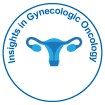Reproductive Cancer and the Risk of Ovarian Cancer, Hormonal Imbalances in Female
Received Date: Dec 02, 2022 / Published Date: Jan 02, 2023
Abstract
The ovary is made up of three distinct cell types: epithelial cells, germ cells, and stromal cells. When these cells become abnormal, they can divide and form tumors. Ovarian cancer is a cancerous tumor of an ovary. It may originate from the ovary itself or more frequently from communicating nearby structures like the inner lining of the abdomen or the fallopian tubes. These cells also can invade or spread to other parts of the body. At the beginning of this process, there may be no or only vague symptoms. Symptoms become more noticeable as the cancer progresses. These symptoms include, among others, bloating, vaginal bleeding, pelvic pain, abdominal swelling, constipation, and a loss of appetite. Common areas to which the cancer may spread are the lining of the abdomen, lymph nodes, the Women who have never had children, those who began ovulating at a younger age, and those who reach menopause at an older age are all more likely to develop ovarian cancer. It is also more common in women who have ovulated more over their lifetime. Other risk factors include hormone therapy after menopause, fertility medication, and obesity. Factors that reduce risk include hormonal birth control, tubal ligation, pregnancy, and breast feeding. There are five main subtypes of ovarian carcinoma, with high-grade serous carcinoma (HGSC) being the most common.
Citation: Ricci S (2022) Reproductive Cancer and the Risk of Ovarian Cancer,Hormonal Imbalances in Female. Current Trends Gynecol Oncol, 7: 133. Doi: 10.4172/ctgo.1000133
Copyright: © 2022 Ricci S. This is an open-access article distributed under theterms of the Creative Commons Attribution License, which permits unrestricteduse, distribution, and reproduction in any medium, provided the original author andsource are credited.
Share This Article
Recommended Journals
Open Access Journals
Article Tools
Article Usage
- Total views: 1112
- [From(publication date): 0-2022 - Apr 02, 2025]
- Breakdown by view type
- HTML page views: 804
- PDF downloads: 308
